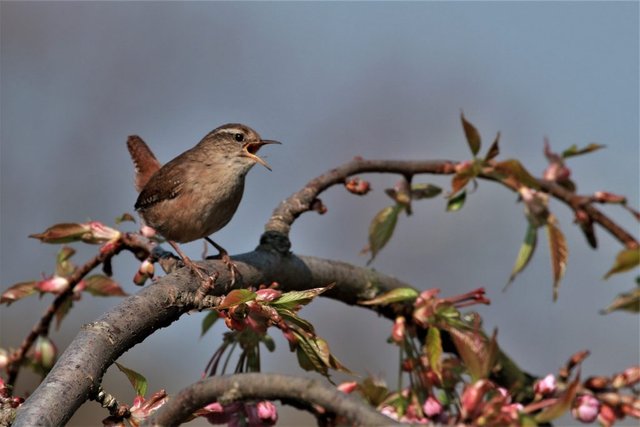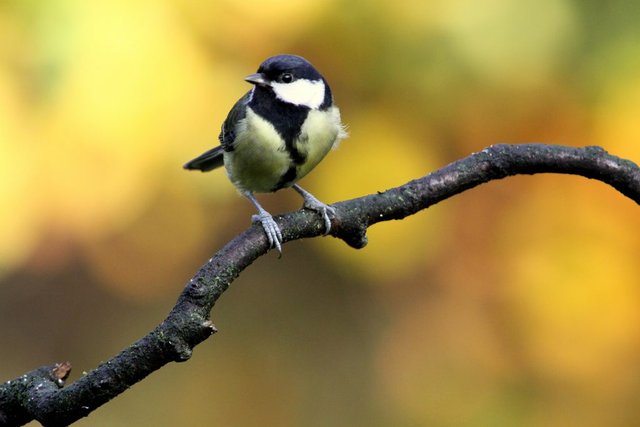In Search of the UK’s Commonest Bird

It’s one of those pub quiz questions where the wildlife enthusiast comes into their own – What’s the most common breeding bird in the UK? You sit smiling smugly for a moment while your team-mates twitter about sparrows and starlings. Then you plonk down your half of lager and whisper triumphantly: “No it isn’t – it’s the wren.”
Correct. Pick up your free packet of pork scratchings at the bar.
I’ve got a follow-up question, though – If wrens are so common, how come I don’t see more of them? It’s something that’s niggled away at me for years. In fact, I must confess to a certain sympathy for your ornithologically-challenged quiz companions because it just feels to me that quite a few other species are around in far greater numbers. When was the last time you spotted a large flock of wrens competing noisily for food in your garden? Or a murmuration of thousands of wrens sweeping across the winter sky?
Time to inject some hard facts, courtesy of the RSPB. There are 8.6 million breeding wren territories in the UK. Wrens can be found in almost any habitat where there are insects to eat and bushes or rock crevices in which to build their domed nest.
Now for something infinitely less scientific. I decided to do my own mini survey. Basically, I would count all the different types of birds I saw during my next ten wildlife-spotting walks around my local area and work out how the wren compared with other species. I’d only tick off each species once during each walk, even if I saw larger numbers – a bit like the RSPB’s Big Garden Birdwatch (only with 499,999 fewer participants).
My walks lasted between 45 minutes and two hours and took me on a variety of routes round semi-rural roads and gardens, farmland and woods. Plenty of bushes and insects, then, to give wrens every chance – and they got off to a flying start.
As the RSPB succinctly puts it: “For such a small bird it has a remarkably loud voice.” That full-throated song was a dead giveaway on my first walk, on a blustery mid-March day, making it easy enough to spot the little brown bird with an upturned tail hopping about in a garden hedge in the scenic Shibden Valley near Halifax. I saw 14 other species that day, but the wren was holding its own.
My second walk took me through the woods on a marvellous spring day with goldfinches everywhere and shy dunnocks emerging from the shadows to perch on branches and find their voice. No signs of any wrens, though…until I’d almost got back, when one noisily announced its presence in a fallen tree.
After this promising start, the wren started to tail off. I didn’t spot any on my next three walks, and only saw them on five out of my total of ten walks.
Let’s have a look at the final pecking order over the course of my “survey.” During my ten walks, I saw a total of 30 different species. There were six that I saw every time I went out – carrion crow, jackdaw, house sparrow, great tit, chaffinch and woodpigeon.
Four types of bird were only missing on one occasion – magpie, blue tit, blackbird and goldfinch. Next behind those were robin (8 sightings), starling (7) and collared dove (6).
We finally get to the the UK’s commonest breeding bird in joint fourteenth place, alongside jays and coal tits.
Let’s be clear at this point – I’m not making any great claims for my “research.” To borrow fashionable political parlance, I’m not sure it even scrapes in as indicative, let along meaningful. And I’d be a complete fool to quibble with the collective wisdom and research firepower of organisations like the RSPB and the BTO.
Maybe the answer is that, living in Yorkshire, I’m simply in the wrong part of the UK to see lots of wrens. I’m sure there’s something in this: the RSPB says they are least abundant in Scotland and northern England. But in the past year I’ve been to the New Forest, the Lake District, Anglesey, Denbighshire, Norfolk, Warwickshire and Berkshire and I don’t recall being overwhelmed by little, brown, loud-mouthed birds in any of those places. In fact, on a recent short trip to Shropshire and Powys, I saw more buzzards than wrens.
Perhaps it’s just that wrens are really difficult to spot. Maybe for every one that shouts its presence to an entire wood, there are hundreds skulking secretively in the undergrowth.
All I’m saying is that in my particular neck of the woods (and parks and gardens) Britain’s commonest birds seem be strangely thin on the ground.
Congratulations @vikas2710! You received a personal award!
You can view your badges on your Steem Board and compare to others on the Steem Ranking
Vote for @Steemitboard as a witness to get one more award and increased upvotes!